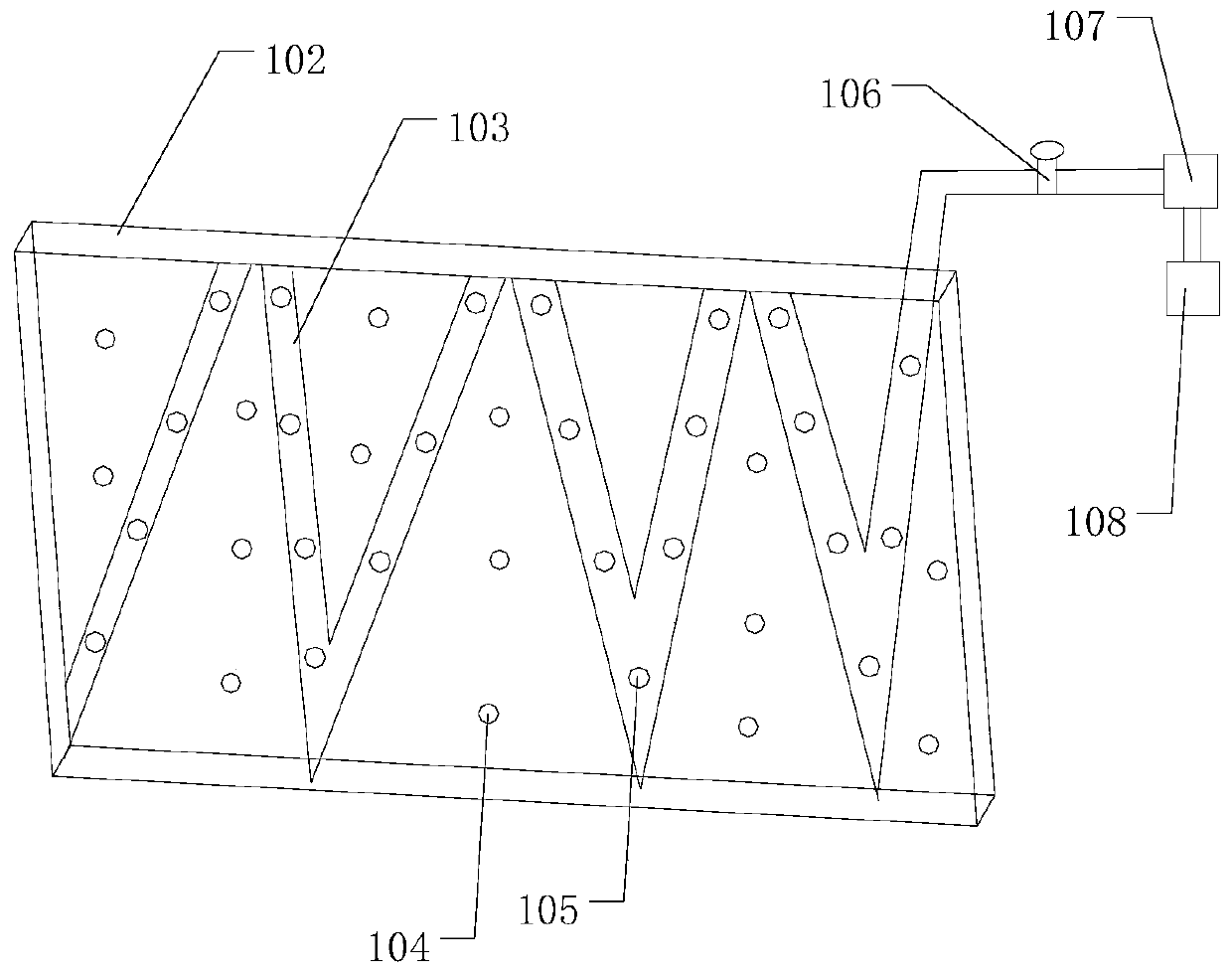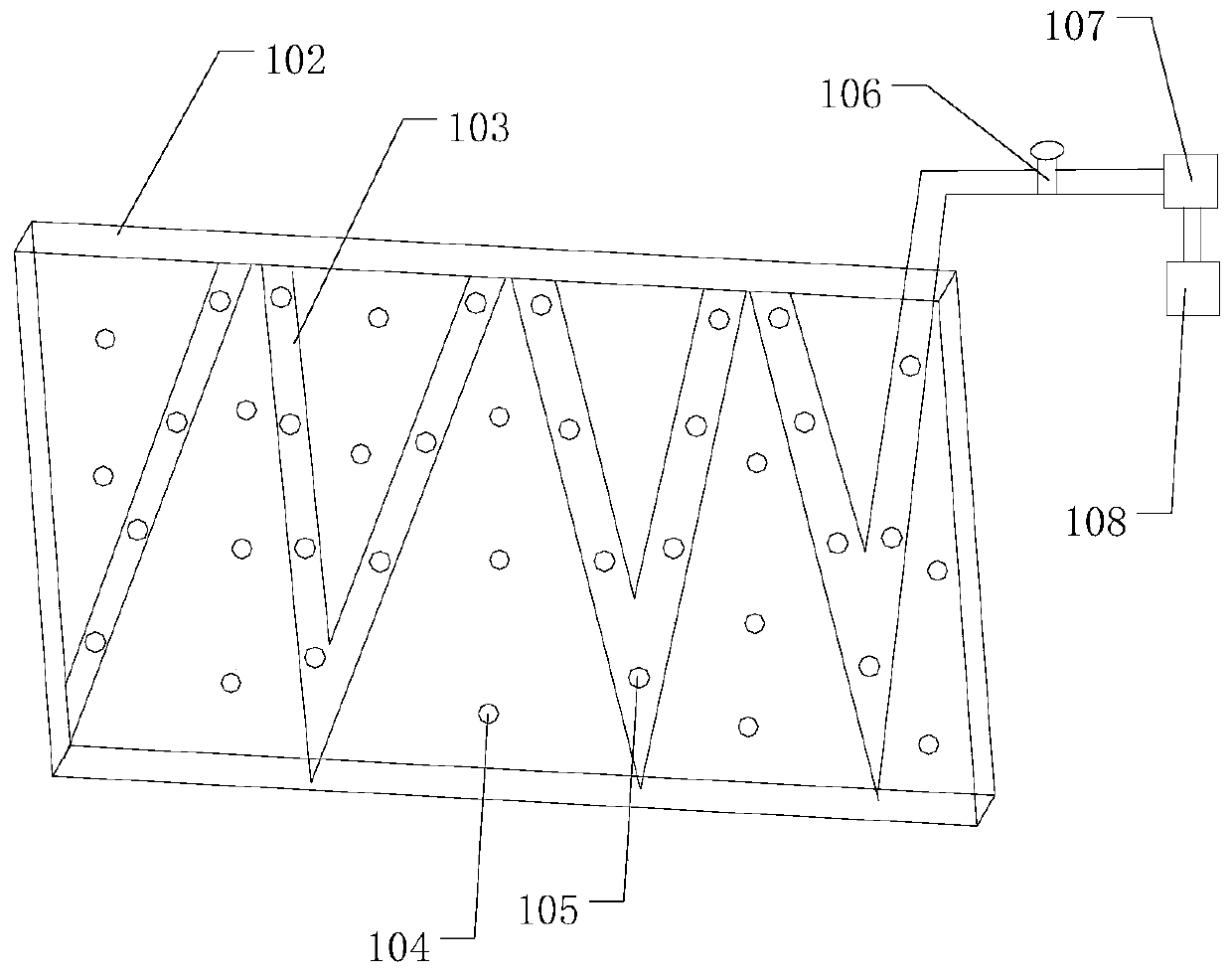Method for producing high-protein feed by solid fermentation of soybean meal
A high-protein feed and solid fermentation technology, which is applied in the field of high-protein production of solid fermented soybean meal, can solve problems such as affecting the digestion, absorption and metabolism of animal nutrients, difficulty in utilizing high-quality protein resources, and adding time affecting enzymatic hydrolysis effects, etc. Absorption and utilization, easy for animals to digest and absorb, beneficial to growth, reproduction and metabolism
- Summary
- Abstract
- Description
- Claims
- Application Information
AI Technical Summary
Problems solved by technology
Method used
Image
Examples
Embodiment 1
[0057] Step 1: Bacillus subtilis was inoculated into the liquid medium at a mass percentage of 3%, and cultured at 32°C for 68 hours to obtain a fermentation broth; the bacterial content of the fermentation broth was: 8*10 8 cfu / mL, the liquid medium contains the following components by weight: 3 parts of yeast extract, 10 parts of corn yellow powder, 3 parts of dipotassium hydrogen phosphate, 0.1 part of trace element group and 800 parts of water; the trace element group contains the following Components in parts by weight: 0.01 part of magnesium sulfate, 0.01 part of zinc sulfate, 0.01 part of ferric chloride, 0.01 part of cobalt chloride and 0.01 part of copper sulfate;
[0058] Step 2: After the soybean meal was sterilized at 105°C for 30 minutes, papain was added at 3.5% by mass, and sterile water was added to keep the moisture content of the sterile soybean meal at 50%, and enzymatic hydrolysis was performed at 40°C for 30 minutes to obtain enzymatic hydrolysis product; ...
Embodiment 2
[0062] Step 1: Bacillus subtilis was inoculated into a liquid medium at 4% by mass, and cultured at 34°C for 70 hours to obtain a fermentation broth; the bacterial content of the fermentation broth was: 8.8*10 8 cfu / mL, the liquid medium contains the following components by weight: 5 parts of yeast extract, 12 parts of corn yellow powder, 4 parts of dipotassium hydrogen phosphate, 0.15 parts of trace element group and 1000 parts of water; the trace element group contains the following Components in parts by weight: 0.02 part of magnesium sulfate, 0.02 part of zinc sulfate, 0.02 part of ferric chloride, 0.01 part of cobalt chloride and 0.015 part of copper sulfate;
[0063] Step 2: After the soybean meal is sterilized at 105°C for 30 minutes, papain is added at 4% by mass, and sterile water is added to keep the moisture content of the sterile soybean meal at 50%, and enzymatically hydrolyzed at 50°C for 35 minutes to obtain enzymatic hydrolysis product;
[0064] Step 3: After ...
Embodiment 3
[0067] Step 1: Bacillus subtilis was inoculated into the liquid medium at 5% by mass, and cultured at 36°C for 72 hours to obtain a fermentation broth; the bacterial content of the fermentation broth was: 10*10 8 cfu / mL, the liquid medium contains the following components by weight: 8 parts of yeast extract, 15 parts of corn yellow powder, 5 parts of dipotassium hydrogen phosphate, 0.3 parts of trace element group and 1000 parts of water; the trace element group contains the following Components in parts by weight: 0.03 part of magnesium sulfate, 0.02 part of zinc sulfate, 0.02 part of ferric chloride, 0.015 part of cobalt chloride and 0.015 part of copper sulfate;
[0068] Step 2: After the soybean meal was sterilized at 105°C for 30 minutes, papain was added at 4.5% by mass, and sterile water was added to keep the moisture content of the sterile soybean meal at 60%, and enzymatically hydrolyzed at 50°C for 40 minutes to obtain enzymatic hydrolysis product;
[0069] Step 3: ...
PUM
| Property | Measurement | Unit |
|---|---|---|
| Thickness | aaaaa | aaaaa |
Abstract
Description
Claims
Application Information
 Login to View More
Login to View More - R&D
- Intellectual Property
- Life Sciences
- Materials
- Tech Scout
- Unparalleled Data Quality
- Higher Quality Content
- 60% Fewer Hallucinations
Browse by: Latest US Patents, China's latest patents, Technical Efficacy Thesaurus, Application Domain, Technology Topic, Popular Technical Reports.
© 2025 PatSnap. All rights reserved.Legal|Privacy policy|Modern Slavery Act Transparency Statement|Sitemap|About US| Contact US: help@patsnap.com



